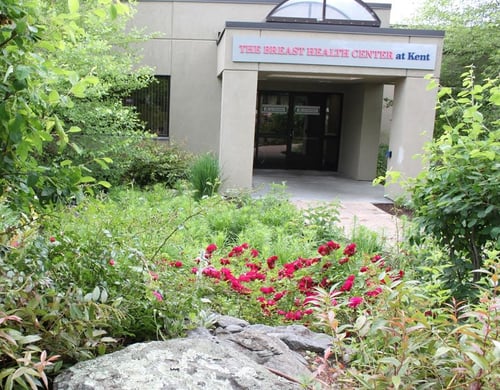Once you've received a diagnosis of breast cancer, here are the top 5 things you should consider:
1. What stage is my breast cancer?
This will significantly impact your prognosis (your long-term chance of survival). Before surgery, your stage is an estimate also known as a ‘clinical’ stage because your final stage is often not definitively known until after your cancer is removed. At that time, your doctor will assign you a ‘pathologic’ stage once all the exact details of your cancer are known such as the true size and lymph node status.
2. Can I save my breast?
Fear is a powerful motivator, but not as strong as you are! Many women initially react to a diagnosis of breast cancer with the reaction that they want both their entire breasts removed. But many women can safely save their breasts. It’s important to have a discussion with your doctors about whether removing your breast/s will change your prognosis—many times it won’t. Newer research tells us if a woman is able to save her breast safely, she will be less likely to experience depression, anxiety, and sexual dysfunction after her treatment. It’s the responsibility of your doctor to address all of those things, and all of the health implications that are important to you as a person, not just your cancer. Newer surgical techniques, like Oncoplastic Surgery (cancer surgery combined with plastic surgery techniques to improve immediate cosmetic outcomes), can be used in most cases to help preserve the breast shape and contour even with larger tumors if needed. Medications can also be given prior to surgery by a medical oncologist, called neoadjuvant therapy, in order to attempt to shrink your tumor and help minimize the amount of surgery you’ll need. You should feel empowered to ask if either of these options could be good choices for you. Certainly, the ultimate decision is intimately personal and a choice best navigated between you and your doctor. Some women feel so nervous after a breast cancer diagnosis that the thought of ever having to undergo another mammogram after treatment may be enough for them to want to undergo a mastectomy—that’s a valid reason, a personal choice. But medically-speaking, a woman should almost always be presented with at least an attempt to save her breast.
3. Do I need chemotherapy?
Once upon a time, all women with breast cancer were treated with chemotherapy. Now-a-days that’s not always the case. Breast cancers are unique, they’re made from your own DNA even if they’ve gone haywire, so they’re all different and you can’t really compare someone else’s treatment with yours. As doctors, we categorize breast cancers into groups based on receptors, or signaling proteins on the surface of cancer cells that respond to certain hormones or medications, they give us a better idea of how each will respond to different treatments. Certain types of breast cancer, like those with Her2 receptors or no receptors (often called “triple-negative” cancers), are still best treated with chemotherapy (though the exact medicines are even more specific), but the majority of breast cancers can respond to hormonal therapy. Hormonal therapy, or endocrine therapy, is typically a pill you take once a day that stops your female hormones (estrogen and progesterone) from stimulating your cancer cells to grow. All women, and even men, have some female hormones, even after menopause; they’re just made in lower concentrations in your adrenal glands and fat cells instead of your ovaries. By blocking or destroying those hormones, the medicine is essentially starving your cancer cells. If you have a lower-risk type of cancer, your doctor may recommend that endocrine therapy is all you need.
4. Did I get my breast cancer from my family?
Most breast cancers are not inherited through your family, only about 5-7% of them are. That can be surprising to many people. The majority of the hereditary cases result from mutations, or changes, in the BRCA genes, which cause a condition known as Hereditary Breast and Ovarian Cancer Susceptibility Syndrome (HBOCS). Other genes, some known but many of which are still unknown, may also cause hereditary or familial cancers. Gene mutations result from damage to the cell’s DNA before you were born and therefore are inherited from a parent. This is why most individuals with breast cancer gene mutations will have a family history of breast cancer in young women (<50 years old), multiple affected family members, and/or ovarian cancer. Mutations within the BRCA genes are especially common in the Ashkenazi Eastern European Jewish population. Many treatment teams offer blood tests to identify gene mutations if indicated even before surgery. These tests will help you determine if your breast cancer is hereditary (passed in your family) or sporadic (unrelated to your family). It can also affect your chance of developing second breast cancer later in life and of course your family members’ chances of developing breast cancer.
5. How can I let others help me?
A new diagnosis of breast cancer is shocking and stressful. You may feel any number of vastly different, but all valid, emotions, and most likely no one, not even your partner, best friend, or other survivors, will quite understand what you’re going through. How could they? But just because you may feel alone (or not!) doesn’t mean you can’t let people help you. Support groups or counseling are always good places to talk to someone, but even if you don’t want to talk about it, there’s always something you can let someone who cares about you do. Maybe you just want a home-cooked meal. Or someone to clean your house for you, watch the kids for a few hours, walk with you, play music, or even go fishing with you. (It doesn’t even have to be someone you know!
See CleaningforaReason.org, NannyAngelNetwork.com, MusicBoxAngels.org, or CastingforRecovery.org )
Sometimes it just helps to take your mind off things. And don’t forget, you deserve a break.
For questions, call (401) Care Now or visit us here to make an appointment. We're here to help.




 Same Day Mammograms >>
Same Day Mammograms >>